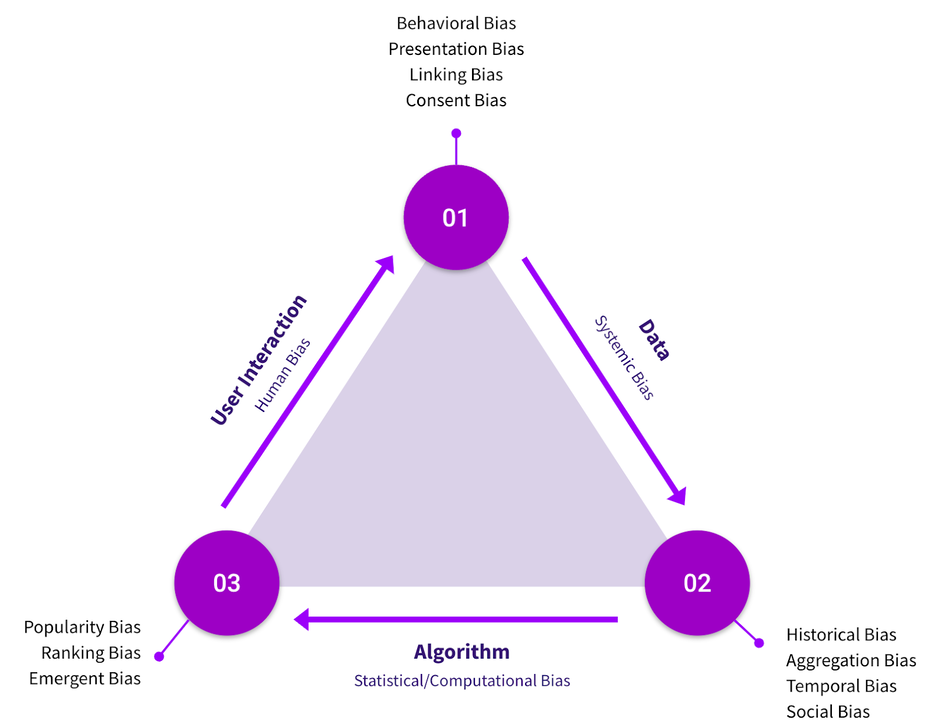Artificial Intelligence (AI) is infiltrating businesses and becoming commonplace. However, researchers are concerned about diversity and inclusion in widely deployed AI systems.
The debate over the necessity of diversity and inclusion in the age of AI arose from the fact that AI systems are built on learning from data, and if the data is biased according to the person producing it, it can have serious effects.
Difference between diversity and inclusion
| Aspect | Diversity | Inclusion |
|---|---|---|
| Definition | Diversity refers to the presence of a variety of different individuals, often in terms of race, gender, age, background, etc. | Inclusion focuses on creating an environment where diverse individuals feel valued, respected, and heard. |
| Objective | The goal of diversity is to have a workforce that reflects the demographic composition of society. | The objective of inclusion is to foster an atmosphere where all employees can contribute their unique perspectives and skills. |
| Implementation | Diversity initiatives typically involve hiring a diverse workforce through recruitment and retention efforts. | Inclusion initiatives involve creating an inclusive culture that promotes collaboration, empathy, and equity for all employees. |
| Benefits | Diversity can bring different viewpoints and experiences to the table, which may enhance creativity and innovation. | Inclusion ensures that diverse individuals can fully participate, resulting in increased engagement, productivity, and a sense of belonging. |
| Role of AI | AI can be used in diversity by helping identify and eliminate bias in recruitment processes, such as resume screening. | AI can assist in fostering inclusion by analyzing communication patterns, detecting microaggressions, and providing insights on building more inclusive teams. |
According to the World Economic Forum’s report titled A Blueprint for Equity and Inclusion in AI 2022, there has been a growing commitment to diversity, equity, and inclusion (DEI) values and best practices among industry stakeholders.
The diversity and inclusion would ensure
1. An Innovative Workforce is One with Diversity
A diverse team brings a wide range of viewpoints, experiences, and approaches to problem-solving to the table. This diversity is extremely valuable in AI. It makes it possible to develop algorithms and models that are more thorough, flexible, and able to handle a wider range of problems.
A team made up of people with varied experiences, backgrounds, nationalities, genders, and cultural backgrounds may take on problems and develop solutions that are genuinely ground-breaking.
2. AI System Fairness and Bias Mitigation
AI systems learn from data, and if this data is biased, it can reinforce and even amplify preexisting prejudices. Biases in the training data can be found and fixed with the use of a diverse team, with people from various demographics.
By doing this, it is made sure that AI systems don’t unintentionally spread negative stereotypes or discriminate against particular populations.

3. AI for All: Accessibility and Inclusivity
The products and services developed using AI should be accessible to everyone, regardless of their background or abilities. A diverse team is more likely to consider and incorporate features that cater to a wider audience.
For example, facial recognition systems that are trained on a diverse dataset are more likely to accurately recognize faces of different races and ethnicities.
4. Cultural sensitivity and global relevance
AI is not limited to a certain area or culture. It is a technology that could have an effect on people all over the world. A diversified workforce guarantees that AI systems are considerate of various cultural quirks and are created from a global standpoint. This can help to avoid misunderstandings or unintended cultural insensitivity in AI applications.
Recommended Reading: HOW TO RAISE A GLOBAL CITIZEN: TEACHING YOUR CHILD ABOUT VARIETY
5. Market competition and consumer confidence
Consumers today are pickier and more value-oriented. They look for goods and services from businesses that show a dedication to inclusion and diversity. In addition to fostering consumer trust, embracing diversity in AI development and deployment portrays businesses as forward-thinking and socially responsible, offering them a competitive edge in the market.
6. Avoiding homogenous echo chambers
Teams lacking diversity risk unintentionally creating echo chambers where identical viewpoints and biases are reinforced. This can limit the possibilities of AI technology and result in a closed-minded approach to problem-solving. A diverse workforce challenges presumptions promotes original thought and eventually results in more reliable, comprehensive AI solutions.
Regulatory frameworks are being built to control the usage of AI as the area develops. The significance of justice, openness, and ethical issues is emphasized by several of this legislation. To successfully traverse these complicated concerns and ensure adherence to moral and legal obligations, a varied workforce is better qualified.
Conclusion
There is a lot of discussion, research, and study going on around the role of diversity and inclusion in AI. They are not simply trendy buzzwords; they are crucial pillars that underpin the responsible development and application of powerful technologies in the AI era.
Diversity-friendly AI teams are more innovative, fair, accessible, and globally relevant. Consumer trust is increased, competition is increased, and ethical compliance is ensured. Let’s keep in mind that diversity is essential for a better, more inclusive world powered by AI as we move forward into the future.
Moonpreneur is on a mission to disrupt traditional education and future-proof the next generation with holistic learning solutions. Its Innovator Program is building tomorrow’s workforce by training students in AI/ML, Robotics, Coding, IoT, and Apps, enabling entrepreneurship through experiential learning.























